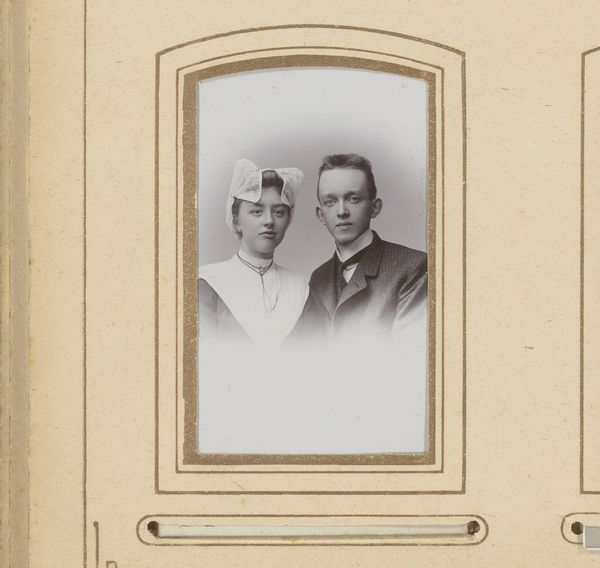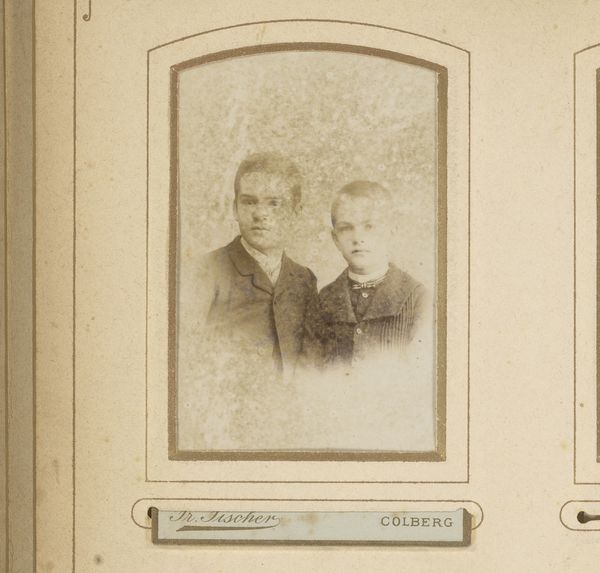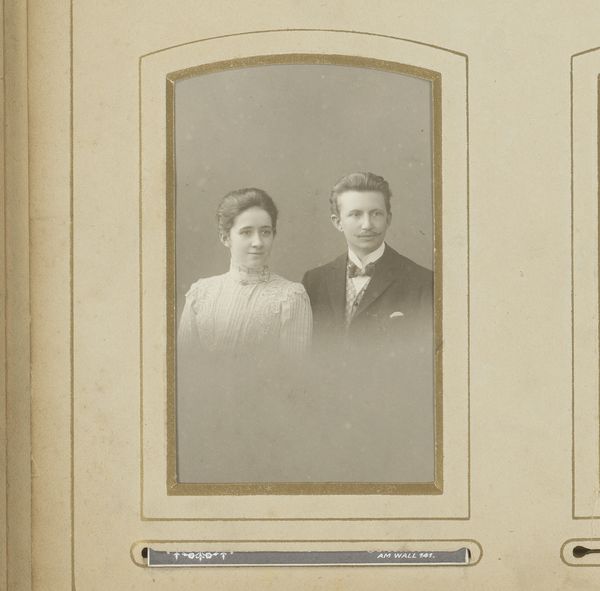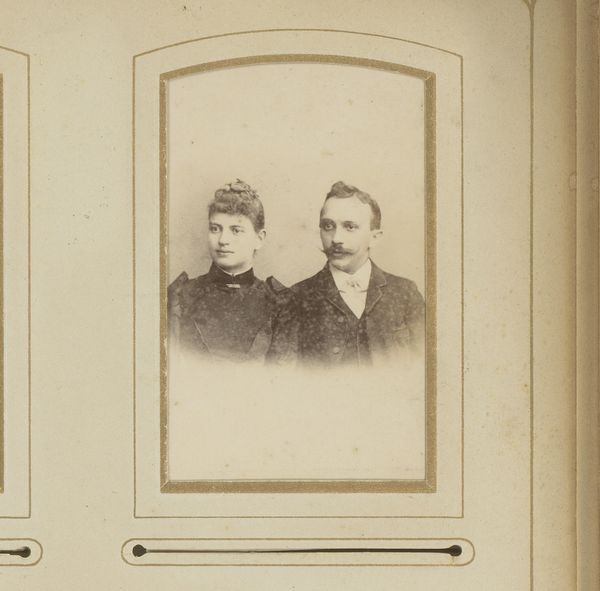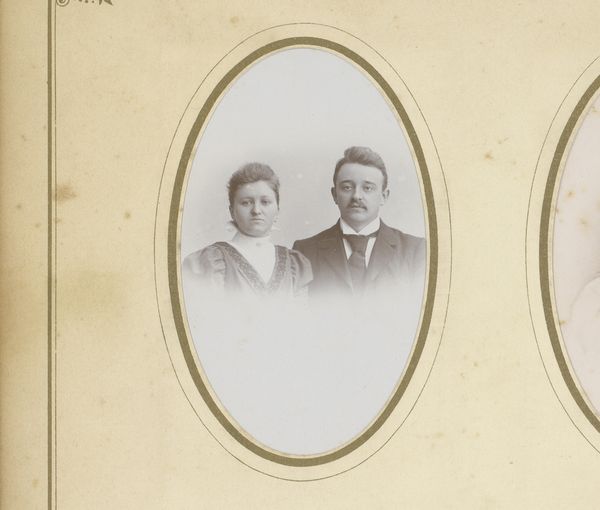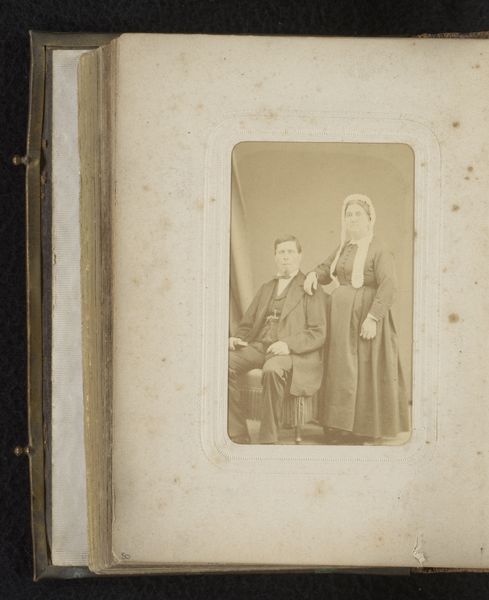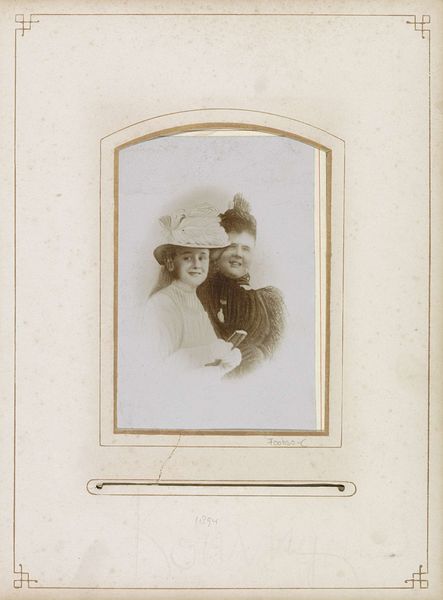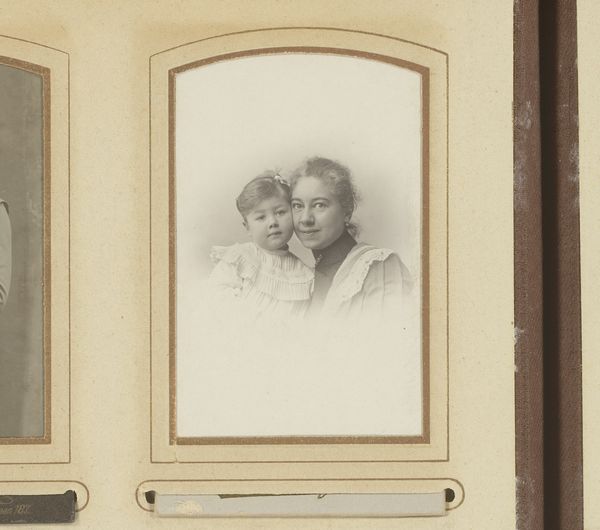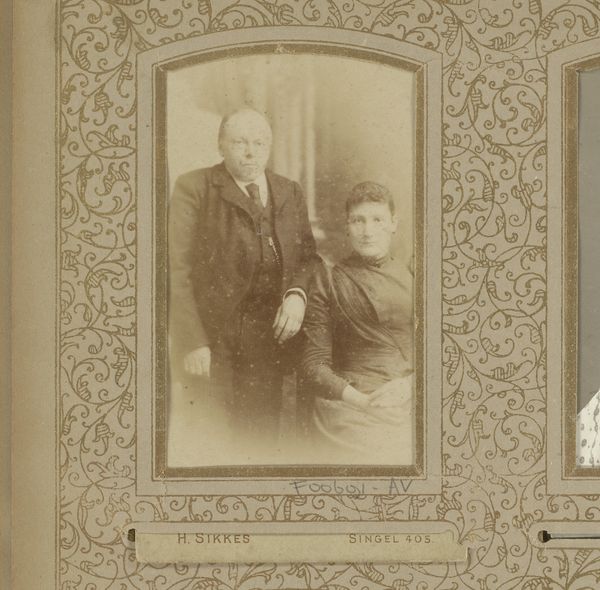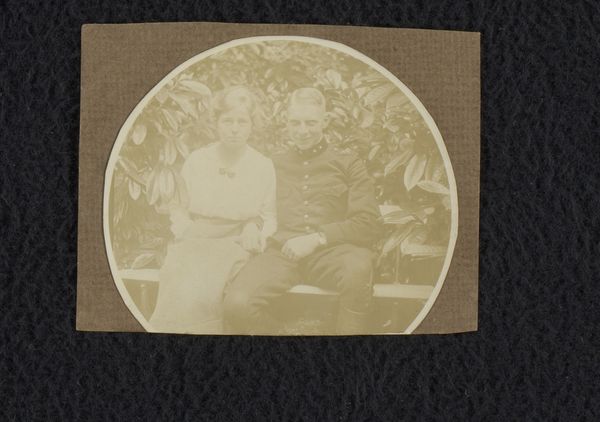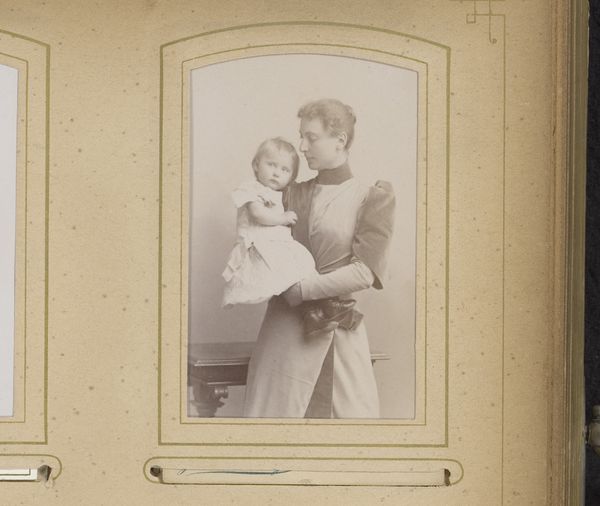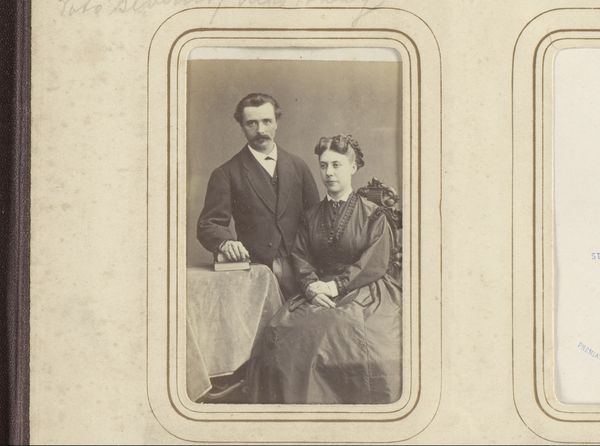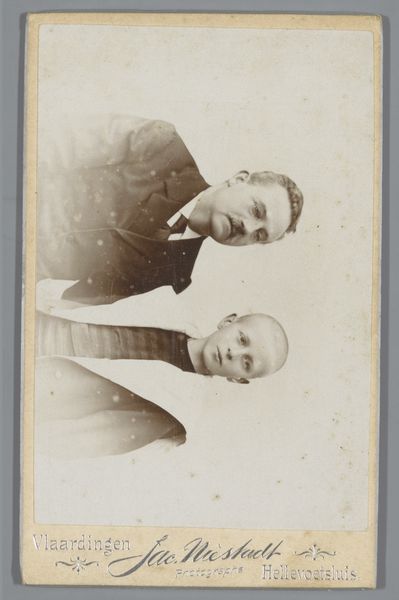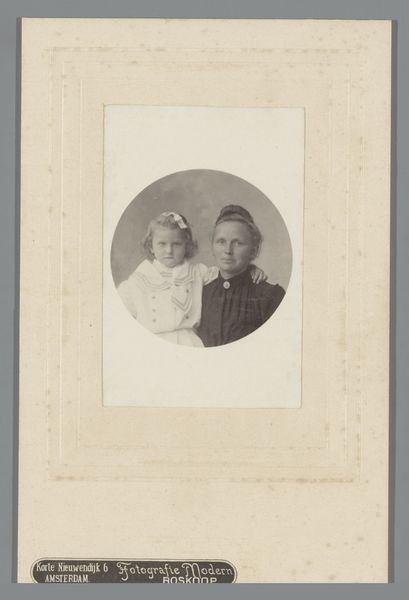
photography, gelatin-silver-print
#
portrait
#
charcoal drawing
#
photography
#
historical photography
#
group-portraits
#
gelatin-silver-print
Dimensions: height 86 mm, width 73 mm
Copyright: Rijks Museum: Open Domain
Curator: This is a gelatin-silver print, "Portret van een meisje en een jongen," attributed to Hahn's Nachfolger, dating sometime between 1880 and 1920. What are your initial thoughts? Editor: Well, it feels like peering into another time. The way they're dressed, the stiff pose—it really speaks to the formal nature of portraiture in that era. How do you approach a piece like this? Curator: I'm interested in how the very process of photography shapes our understanding. Gelatin-silver prints, a dominant form in this period, involved a specific set of materials and labor. Consider the industrial production of photographic materials: paper, silver halides, the development chemicals. This process democratized image-making to some extent, but also introduced new forms of material dependency. Who had access to these processes and materials, and how did that influence the stories being told? Editor: That's fascinating! I never thought about photography in terms of material accessibility. So, in this image, the family must have had access to materials, right? How does the setting and composition add to that? Curator: Exactly. The subjects are carefully posed, likely in a studio setting with a specific backdrop we can't see. The existence of this formal photograph implies a certain level of economic stability, doesn’t it? They could afford not just the materials but also the labor of the photographer and the time investment involved in creating the image. Are these two children of privilege and high status, perhaps the family factory owners themselves? Editor: So, by looking at the materiality of the photograph, and who had access, we are learning something broader about socioeconomic dynamics and maybe power structures. Thank you! Curator: Precisely. Material analysis allows us to unpack not just the 'what' but the 'how' and 'for whom,' revealing a complex interplay between art, industry, and social class.
Comments
No comments
Be the first to comment and join the conversation on the ultimate creative platform.
